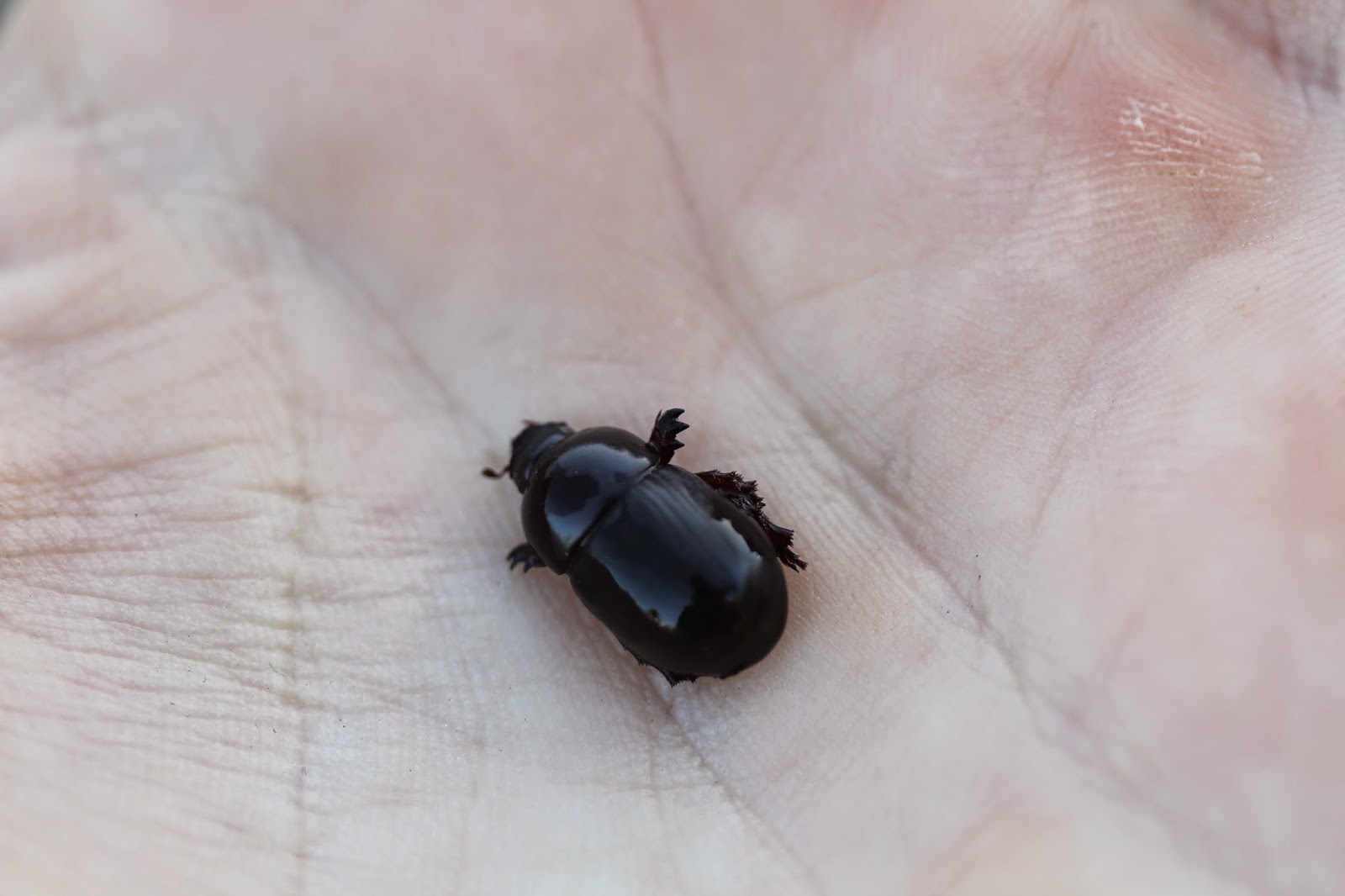One job done, I went to explore the back native garden which is coming along nicely after removal of a rampant Kennedia nigricans (lovely but too big for my space) that had swamped a few of the smaller plants. There are a couple of empty patches of ground now, and I'd noticed when weeding a few weeks ago that there were heaps of white curl grubs in the soil. They eat roots you see, so most people know them as lawn grubs, who munch the roots of plants or grass below the ground until the plant gives up and simply dies. If your lawn is affected, it can simply roll up like carpet once the roots are all eaten.
The culprits are larvae of the pest African Black Beetle Heteronychus arator, who is often attracted to backyards with solar lights or security lights on during the night. They congregate around the lights, and lay their eggs in your garden, lawn or plant pots.
They seem oblivious to humans and fly around you unafraid and at great speed, eventually landing on the ground. If you're lucky, like I was...you might see her start digging in empty patches of ground, and come up a minute or so later. The beautiful part is, she's hunting for curl grubs to lay her eggs on, so her babies will eat them for me. As the saying goes... my enemy's enemy is my friend...
This is the first time I've seen one here, and I'm hoping it's because of the flowering natives I've planted for the birds and bees to feed on (these native wasps feed on nectar as adults and are also useful pollinators). Hopefully as my garden grows I'll attract plenty more so I don't have to use any nasty lawn grub chemicals!
As an extra nerdy treat, I also saw this wasp which I think is the male Hairy Yellow Flower Wasp Campsomeris sp, resting on my lemon grass. It performs a similar function, but I haven't seen them before at all. Will have to do some more research, the biodiversity here is increasing all the time!





















